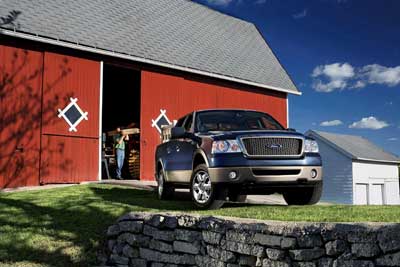Recent Articles
Popular Makes
Body Types
Made in America
The grille says USA, but that car is an import. Or is it?
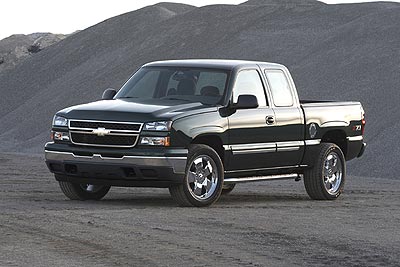
Workers allow only Ford vehicles into the parking lot. A group of Big Three retirees get together and spend their pensions on a website dedicated to proving what it means to be American made. A foreign company publishes billboards that tout its decades-long commitment to America, and even enter into NASCAR racing’s premiere circuit, the Nextel Cup. And so -- the argument continues. Both sides are right – and wrong. Despite massive cuts, GM and Ford employ more people than Toyota and Honda, and still make more cars here, on US soil. The most American car is still a Ford, followed by a Chevy, and the profit still stays here at home. The names on the cars trace back a hundred years or more, and symbolize the American Ideal for generations of people: a good job, doing something worthwhile, building something that lasts, and leaving a legacy in sheet metal, glass and rivets. So they’re right. But they’re also wrong, because today these same companies do business in a much different way. Faced with fierce competition and the globalization of the automotive industry, Ford and General Motors have looked outside our borders for cheaper parts and assembly; as the cost of building a car has gone up and the responsibility of pensions and pay has weighed down, US automakers have been getting decidedly less American, and the national distinction of their vehicles considerably more blurry. At the same time, foreign automakers have invested here; the likes of Toyota, Honda, Hyundai and others have put down stakes and have built their own American legacy over the span of 30 years. Now, generations of Americans look at these companies as the providers of the American Ideal. While traditional US automakers have been closing plants and moving production, foreign automakers have busied themselves with opening new plants, design shops and parts centers, employing people and rejuvenating local economies. Today, their cars are just as American as any other. As a result, it’s hard to tell what really an American-made car is, and perhaps even why it matters. Car buyers who wish to buy American have a confusing maze of information to navigate: there’s the location of the assembly plant, the percentage of parts content, the ideal of that name on the grille, and, finally, where the pocket is that will take the profit and re-invest it into future cars and products. Each element weighs differently to each person, to be sure, so we have attempted to create a comprehensive guide to understanding what it is that makes a car an American car. Because it’s jobs and investment that matter most, we rank the assembly and parts makeup of a vehicle as most important, followed by the location of the corporate parent and, finally, the name of the brand. Choosing the right car is difficult, and it’s enough for buyers to find a car that meets their daily needs. If, however, you also want to make a statement with your purchase, toss aside the rhetoric of the car companies and consider one question: what’s the most important thing about driving and owning an American made car? We think its jobs and investment. What about you?
What Makes an American
The US Government defines domestic vehicles in two basic ways: where they’re assembled and the percentage of parts content comes from an American source. We add the final two criteria to clear the air on confusing issues regarding ownership. For example, you may think that the Dodge Ram is an American vehicle, but it’s really not: Because Dodge is owned by a German company, DaimlerChrysler, and because its parts content does not reach the US threshold of 75 percent, it’s actually an import. We also recognize the value of a brand, and the cultural importance they play in the lives of Americans. For example, Ford is more than just a car company; it’s a family with a historic legacy that covers assembly line production and automobiles. Regardless of recent struggles, the name and brand of Ford, Chevrolet, Cadillac or others resonates with people as a part of their lives. The two main criteria, however, can serve a valuable role in determining what constitutes an American vehicle: Assembly Plants: Where the car is put together. This creates thousands of jobs for Americans, stimulates local communities, and lays down the foundation on which people will raise families and live their lives. Recently opened plants include the Nissan plant in Canton, Mississippi, and a Toyota truck plant outside San Antonio, Texas. Inside, automotive assembly plants are sprawling creations filled with thousands of robotics, people and cars. There's a car line that weaves from room to room, constantly carrying vehicles in various stages of manufacture, being assembled by hundreds of people at various posts along the line. Coming plants include a Kia plant in Georgia and a Honda plant in Indiana. On the other side of the aisle, Ford recently raised eyebrows over the announcement that the company would be opening a plant in Mexico, while closing plants here. Ford has denied that plans are in place for a new Mexican automotive plant. Parts and Content: So what if that car was put together here, how much of it is American? Just like assembly plants, a car that’s made up of US-sourced parts helps in job creation. Consider the amount of work and investment that goes into, say an engine plant, and you get the picture. Thanks to the Government, we have a way of gauging that content, though its usefulness is a bit questionable. Passed into law in the early nineties, the American Automobile Labeling Act (AALA) was an attempt to regulate what was called “Made in the USA,” by requiring that 75 percent of the parts content be from the US or Canada. That’s one of the many curious things about it: why Canada? Probably because, with plants open and operating up north, domestic automakers wanted to get credit for the parts built there, and perhaps felt that, due to the proximity of Ontario, Canada, to Detroit, Michigan, the definition should be grouped. Another quirk of the AALA is the way it defines its parts content percentage: it’s by value, which, according to foreign automakers, penalizes them. If the value of one part of a transmission is more than the rest, such as the gear set, and that’s imported, then the percentage of “Made in the USA” content goes down – even though the rest of the transmission is built in the US. Even according to the National Highway Traffic Safety Administration (NHTSA), the effectiveness of the AALA is questionable. Today, in fact, the AALA may actually do the opposite of its intent, as foreign automakers boost their commitments in the US, and domestic automakers look elsewhere for cheaper parts and labor. According to CSM Worldwide, there has been a steady growth of foreign parts production since 1997, the year before AALA was enacted, while at the same time, domestic automakers have just as steadily decreased their US parts production.
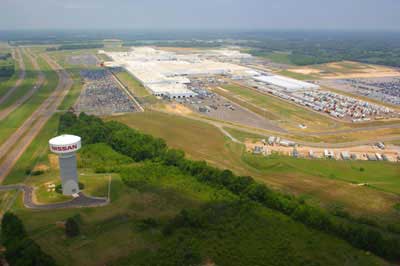
Red, White and Blue Cars
So you want to buy the most American car on the road. Welcome, then, my friend, to the Ford Econoline, which has a whopping 95 percent of its parts content from here (or Canada). Not interested? Then try the Ford Escape (not the hybrid version) and its brother the Mercury Mariner, or a Chevrolet Silverado. If you’re looking for something a little more up town, get yourself a Cadillac DTS luxury sedan. These are just a few of the vehicles that meet our criteria for All-American, in order of what’s most important to what’s least important: Assembly: Assembly plants create thousands of American jobs, and millions of dollars are invested in the local economy. Parts/Content: Parts centers create hundreds of jobs, and community investment is significant. Company headquarters: Where the bottom line profit goes Name: Given our image-conscious society, some feel it’s appropriate to represent their American-ness. For minivan shoppers, the Toyota Sienna is as All-American as it gets, despite its Japanese roots: the Sienna is assembled in the US, and 83 percent of its parts come from US or Canada. The next closest minivan is the Dodge Caravan/Grand Caravan or Chrysler Town and Country: the popular “Stow and Go” models are built in Canada, they have a slightly smaller parts percentage, and headquarters is in Germany. For non-luxury sedan shoppers, they can start with the Ford Five Hundred, Chevrolet Malibu, or the Toyota Camry. All are built here, with 80 percent US/Canada parts, but the Camry sends at least some of its profit to Tokyo. Given fuel prices and the proven quality of the Camry, it would seem that smart shoppers would discount the profit/name penalty, and be glad that the sedan they’re buying is made and marketed here in the US. Small car searchers with an All-American mandate can choose between the Chevrolet Cobalt and the Toyota Corolla (75 percent). If you think that a tiny percentage difference is a bit silly, add the Honda Civic to your list, at 70 percent.
Ford Econoline95%USAUSALincoln LS (production ended April 2006)90%USAUSAFord Escape90%USAUSAMercury Mariner90%USAUSAFord Ranger90%USAUSACadillac DTS90%USAUSAChevrolet Silverado, GMC Sierra90%USAUSAMazda Tribute (Ford)90%JAPANJAPANMazda B-Series (Ford)90%JAPANJAPANLincoln Town Car85%USAUSAMercury Mountaineer85%USAUSAFord F-Series85%USAUSAChevrolet Colorado, GMC Canyon,85%USAUSABuick Rainer, GMC Envoy, Chevrolet TrailBlazer85%USAUSAIsuzu Ascender (GM)85%JAPANJAPANDodge Viper85%USAGERMANYIsuzu i-Series (GM)85%JAPANJAPANToyota Sienna85%JAPANJAPANDodge Grand Caravan – SWB83%USAGERMANYChrysler Town & Country – SWB82%USAGERMANYChrysler Sebring convertible82%USAGERMANYJeep Wrangler82%USAGERMANYFord Five Hundred80%USAUSAFord Expedition80%USAUSAFord Explorer80%USAUSAFord Freestyle80%USAUSALincoln Mark LT80%USAUSACadillac CTS80%USAUSAPontiac Solstice80%USAUSAChevrolet Corvette, Cadillac XLR80%USAUSAChevrolet Malibu, Pontiac G680%USAUSACadillac SRX80%USAUSADodge Caravan – SWB80%USAGERMANYToyota Camry80%JAPANJAPANToyota Tundra80%JAPANJAPANDodge Durango79%USAGERMANYDodge Stratus78%USAGERMANYMitsubishi Raider (Dodge)78%JAPANJAPANDodge Dakota77%USAGERMANYChrysler Sebring77%USAGERMANYJeep Commander76%USAGERMANYMercury Montego75%USAUSAChevrolet Uplander, Pontiac Montana SV6, Saturn Relay75%USAUSAChevrolet Cobalt75%USAUSAHonda Ridgeline75%JAPANJAPANHonda Pilot75%JAPANJAPANToyota Avalon75%JAPANJAPANToyota Corolla75%JAPANJAPAN
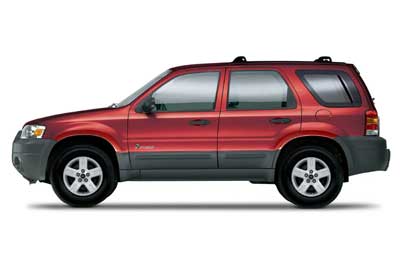
Near Misses
Poor Honda. According to the US government, all they need is a measly five percent more to get into the All-American club. They fall short, even though the company has invested millions of dollars in building assembly plants and parts centers across the nation – never mind that they build some of the most popular cars on the road. Given the combination of US and Canada parts, it seems to be a definition designed to keep “Made in the USA” for USA brands. That’s changing, and fast: according to NHTSA and CSM Worldwide, import automakers are increasingly bringing their parts with them when they open up new assembly plants. The result is that in the near future, vehicles such as the Honda Accord, Civic, CR-V, Element and others will begin to qualify for that oh-so cherished American Automobile Label Act (AALA) badge. As if that would boost sales. Ironically, some of the more famous “American” cars are now getting caught in the AALA net. DaimlerChrysler – a German company that owns Chrysler, Dodge and Jeep – has such red white and blue stalwarts like the Dodge Ram or the Jeep Grand Cherokee on the “near miss” list. Not to mention such iconic American rides as the Ford Mustang, which is made of just 60 percent US/Canadian content. So, for all you import buyers out there, the next time you chat up your Yankee-doodle neighbor with the Dodge Ram, kindly point out that, according to NHTSA, your built-in-the-US import is more American than that All-American Ram grille. Or even that Impala bowtie.
Jeep LibertyUSA74%IMPORTDodge RamUSA74%IMPORTJeep Grand CherokeeUSA73%IMPORTLincoln NavigatorUSA70%IMPORTDodge CaliberUSA70%IMPORTToyota TacomaUSA70%IMPORTHonda AccordUSA70%IMPORTHonda CivicUSA70%IMPORTHonda OdysseyUSA70%IMPORTChevy ImpalaCANADA92%IMPORT
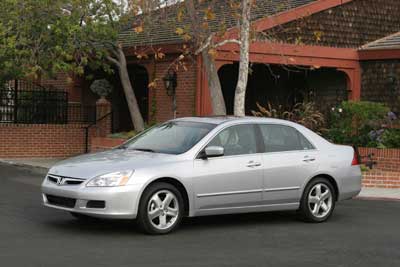
New Domestics
Analysts call them “New Domestics,” a clever tag used to describe automakers that have relocated much of their operations to North America…but come from somewhere else. Toyota, Honda, Nissan and Hyundai are perfect examples of automakers that are building research and development centers, assembly plants, engine plants, transmission plants and other parts houses across the nation, employing workers and rejuvenating local economies. Get used to it. As these automakers transition more toward US locations, they are quickly becoming as domestic as the “old domestics.” According to CSM Worldwide, in fact, parts sourcing for General Motors has decreased over 11 percent between 1997 and 2005, down to 79.9 percent. Toyota, meanwhile, has increased their parts volume from the US/Canada tandem to 68.9 percent, up from 52 percent. Honda upped its commitment in the same time period by almost nine percent, according to CSM, and Ford decreased their commitment by 3 percent. It’s a shift that will keep shifting, as these “New Domestics” continue to bring parts manufacturing to the US and the “Old Domestics” shift to less expensive parts suppliers overseas. One day soon, in fact, the government’s American Automobile Labeling Act will show just how outdated it is, when the vehicles with the most US/Canada content will have names such as Camry, Accord, Civic and Sienna. The trend begs a question: with only a 10 percent difference in the amount of parts produced here in 2005, with thriving plants across the nation and with plans to funnel more investment into the US, just how much more American is GM, compared to Toyota?
Toyota SiennaUSA85%DOMESTICToyota CamryUSA80%DOMESTICToyota TundraUSA80%DOMESTICHonda RidgelineUSA75%DOMESTICHonda PilotUSA75%DOMESTICToyota AvalonUSA75%DOMESTICToyota CorollaUSA75%DOMESTICHonda AccordUSA70%IMPORTHonda CivicUSA70%IMPORTHonda OdysseyUSA70%IMPORT
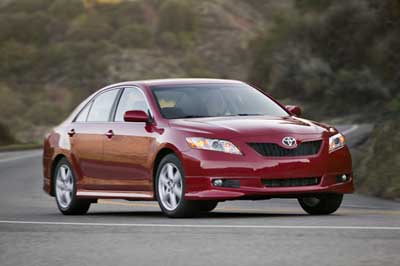
Top-selling All-Americans
Despite the ruckus about saving jobs and buying American products, when it comes to the most popular vehicles for sale in the United States car shoppers seem to care more about what it is than where it’s from. According to the for example, that extra five percent of US/Canadian content missing from the Accord or the Civic seem unimportant, as they remain among the most popular cars in the nation. And it’s unlikely that folks would stop buying the F-150 truck if Ford decided to get parts from another country. At least until the quality went down. Indeed, quality, style and other on-the-street considerations seem much more important to car shoppers, even with all the clacking tongues on television. In fact, according to a follow-up report commissioned in 2001, NHTSA concluded that 75 percent of car buyers surveyed were not aware of the label. The study surveyed 646 people who had bought or leased new vehicles during the past 6 months, or were planning to do so within 3 months, and found that only 2 percent were “moderately or strongly influenced by the label because it identified the vehicle's country of assembly.” Sure seems as though a good car – or a good price – trumps where the parts come from, who gets the profit or what the name on the grille represents.
Ford F-SeriesUSA85%DOMESTICChevrolet SilveradoUSA90%DOMESTICToyota CamryUSA80%DOMESTICDodge RamUSA74%IMPORTHonda AccordUSA70%IMPORTHonda CivicUSA70%IMPORTChevrolet ImpalaCANADA92%IMPORTDodge Grand Caravan – SWBUSA83%DOMESTICNissan AltimaUSA65%IMPORTChevrolet CobaltUSA75%DOMESTICToyota CorollaUSA75%DOMESTICGMC SierraUSA90%DOMESTICFord FocusUSA60%IMPORTFord ExplorerUSA80%DOMESTICChevrolet MalibuUSA80%DOMESTICHonda OdysseyUSA70%IMPORTFord MustangUSA60%IMPORTToyota TacomaUSA70%IMPORTChevrolet TrailBlazerUSA85%DOMESTICChevrolet TahoeUSA67%IMPORT
Photos courtesy of the automakers
